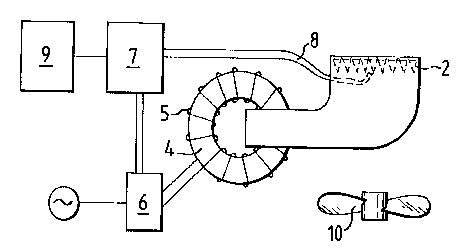Some of the information on this Web page has been provided by external sources. The Government of Canada is not responsible for the accuracy, reliability or currency of the information supplied by external sources. Users wishing to rely upon this information should consult directly with the source of the information. Content provided by external sources is not subject to official languages, privacy and accessibility requirements.
Any discrepancies in the text and image of the Claims and Abstract are due to differing posting times. Text of the Claims and Abstract are posted:
| (12) Patent: | (11) CA 2244178 |
|---|---|
| (54) English Title: | METHOD OF HEATING A SPECIMEN CARRIER |
| (54) French Title: | METHODE DE CHAUFFAGE POUR PORTE-SPECIMENS |
| Status: | Term Expired - Post Grant Beyond Limit |
| (51) International Patent Classification (IPC): |
|
|---|---|
| (72) Inventors : |
|
| (73) Owners : |
|
| (71) Applicants : |
|
| (74) Agent: | NORTON ROSE FULBRIGHT CANADA LLP/S.E.N.C.R.L., S.R.L. |
| (74) Associate agent: | |
| (45) Issued: | 2008-10-14 |
| (86) PCT Filing Date: | 1997-01-23 |
| (87) Open to Public Inspection: | 1997-07-31 |
| Examination requested: | 2002-01-22 |
| Availability of licence: | N/A |
| Dedicated to the Public: | N/A |
| (25) Language of filing: | English |
| Patent Cooperation Treaty (PCT): | Yes |
|---|---|
| (86) PCT Filing Number: | PCT/GB1997/000195 |
| (87) International Publication Number: | WO 1997026993 |
| (85) National Entry: | 1998-07-24 |
| (30) Application Priority Data: | |||||||||
|---|---|---|---|---|---|---|---|---|---|
|
A method and apparatus for heating specimens in wells of a metallic specimen
carrier. The specimen carrier is heated by applying
resistive heating directly to the carrier. An AC source and transformer may be
used where the specimen carrier is in series with a single
turn secondary winding of the transformer.
L'invention porte sur un procédé et un appareil permettant de chauffer des échantillons dans les coupelles d'un porte-échantillons métallique. On chauffe ce dernier directement en faisant directement intervenir une résistance spécifique. On peut utiliser une source de courant alternatif ainsi qu'un transformateur lorsque le porte-échantillon est monté en série, l'enroulement secondaire du transformateur étant à spire unique.
Note: Claims are shown in the official language in which they were submitted.
Note: Descriptions are shown in the official language in which they were submitted.

2024-08-01:As part of the Next Generation Patents (NGP) transition, the Canadian Patents Database (CPD) now contains a more detailed Event History, which replicates the Event Log of our new back-office solution.
Please note that "Inactive:" events refers to events no longer in use in our new back-office solution.
For a clearer understanding of the status of the application/patent presented on this page, the site Disclaimer , as well as the definitions for Patent , Event History , Maintenance Fee and Payment History should be consulted.
| Description | Date |
|---|---|
| Inactive: Expired (new Act pat) | 2017-01-23 |
| Small Entity Declaration Request Received | 2011-01-07 |
| Small Entity Declaration Determined Compliant | 2010-01-18 |
| Small Entity Declaration Determined Compliant | 2009-01-12 |
| Grant by Issuance | 2008-10-14 |
| Inactive: Cover page published | 2008-10-13 |
| Small Entity Declaration Request Received | 2008-07-11 |
| Pre-grant | 2008-07-11 |
| Small Entity Declaration Determined Compliant | 2008-07-11 |
| Inactive: Final fee received | 2008-07-11 |
| Notice of Allowance is Issued | 2008-04-15 |
| Letter Sent | 2008-04-15 |
| Notice of Allowance is Issued | 2008-04-15 |
| Inactive: Approved for allowance (AFA) | 2008-04-01 |
| Amendment Received - Voluntary Amendment | 2008-01-17 |
| Inactive: Office letter | 2007-10-10 |
| Inactive: S.30(2) Rules - Examiner requisition | 2007-07-23 |
| Small Entity Declaration Determined Compliant | 2007-01-19 |
| Inactive: Payment - Insufficient fee | 2007-01-17 |
| Inactive: Entity size changed | 2007-01-03 |
| Amendment Received - Voluntary Amendment | 2006-10-23 |
| Inactive: S.30(2) Rules - Examiner requisition | 2006-06-15 |
| Amendment Received - Voluntary Amendment | 2006-03-28 |
| Inactive: S.30(2) Rules - Examiner requisition | 2005-10-06 |
| Amendment Received - Voluntary Amendment | 2005-09-09 |
| Inactive: S.30(2) Rules - Examiner requisition | 2005-03-09 |
| Amendment Received - Voluntary Amendment | 2005-01-14 |
| Inactive: S.29 Rules - Examiner requisition | 2004-09-08 |
| Inactive: S.30(2) Rules - Examiner requisition | 2004-09-08 |
| Inactive: Entity size changed | 2004-01-28 |
| Amendment Received - Voluntary Amendment | 2003-08-25 |
| Letter Sent | 2002-02-19 |
| All Requirements for Examination Determined Compliant | 2002-01-22 |
| Request for Examination Requirements Determined Compliant | 2002-01-22 |
| Request for Examination Received | 2002-01-22 |
| Classification Modified | 1998-11-09 |
| Inactive: First IPC assigned | 1998-11-09 |
| Inactive: IPC assigned | 1998-11-09 |
| Inactive: Notice - National entry - No RFE | 1998-10-01 |
| Application Received - PCT | 1998-09-28 |
| Application Published (Open to Public Inspection) | 1997-07-31 |
There is no abandonment history.
The last payment was received on 2008-01-22
Note : If the full payment has not been received on or before the date indicated, a further fee may be required which may be one of the following
Please refer to the CIPO Patent Fees web page to see all current fee amounts.
Note: Records showing the ownership history in alphabetical order.
| Current Owners on Record |
|---|
| BJS COMPANY LTD. |
| Past Owners on Record |
|---|
| IAN ALAN GUNTER |